HOW A SWINDLER PULLED A FAST ONE ON A TEXAS TOWN
 Tiny houses are all the rage these days. A growing number of Americans are selling their grownup homes and cramming their belongings into ludicrously teeny structures the size of hamster cages. To each their own, I reckon.
Tiny houses are all the rage these days. A growing number of Americans are selling their grownup homes and cramming their belongings into ludicrously teeny structures the size of hamster cages. To each their own, I reckon.
Nearly 100 years ago, folks in one Texas town decided to build something very big. But they got something very little instead. And nobody was amused by it.
Here’s the story of how a swindler built the world’s littlest skyscraper.
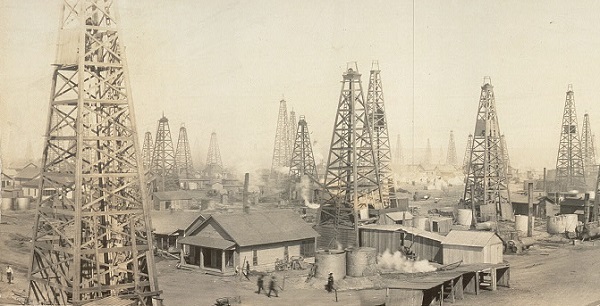 It all started with Texas’ big oil boom in the early days of the 20th Century. Nothing that immense had ever been discovered before, gigantic seas of petroleum that seemed to stretch on forever underground.
It all started with Texas’ big oil boom in the early days of the 20th Century. Nothing that immense had ever been discovered before, gigantic seas of petroleum that seemed to stretch on forever underground.
In 1912, gushers spurted in the Burkburnett Field just outside Wichita Falls, Texas, luring more than 20,000 people there in five years. Everyday folks became millionaires overnight and money flowed like, well, oil.
Wichita Falls wanted to be more than just another boom town. It wanted something that would put it on the map. And in the 1910s, nothing did that better than building a skyscraper.
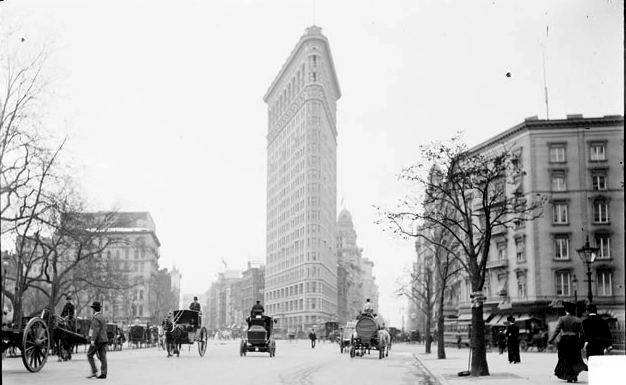 America was skyscraper crazy just then. New York was home to the country’s biggest buildings, of course. But Chicago, San Francisco and many other cities were busily erecting them as well. Newspapers eagerly reported each new record setting height. If your town wanted to be considered a serious city, it better have a skyscraper.
America was skyscraper crazy just then. New York was home to the country’s biggest buildings, of course. But Chicago, San Francisco and many other cities were busily erecting them as well. Newspapers eagerly reported each new record setting height. If your town wanted to be considered a serious city, it better have a skyscraper.
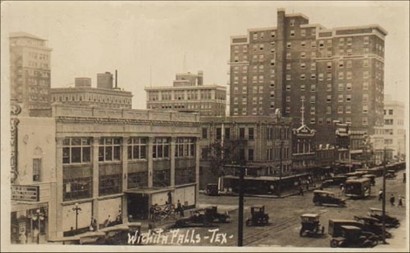 Which is exactly what J. D. McMahon proposed building in 1919. Sure, Wichita Falls already had its share of buildings on the larger side. But McMahon was talking big. Big. BIG!
Which is exactly what J. D. McMahon proposed building in 1919. Sure, Wichita Falls already had its share of buildings on the larger side. But McMahon was talking big. Big. BIG!
Not much is known about the man. McMahon seems to have been a Philadelphian who turned up amid the rush of boomers and ran a company that built oil drilling rigs.
He rented space in the little brick Newby Building. As you would imagine, office space was in high demand at the time. So McMahon suggested killing two birds with one stone: building a sky scraper that would provide much-needed offices while also serving as Wichita Falls’ calling card to the world.
Blueprints were drawn up showing a 48 story annex to the existing Newby Building. McMahon circulated them among local movers and shakers. With so much cash floating around, he had no trouble finding ready investors. Five of them ponied up $200,000, almost $3 million in today’s dollars.
And so ground was broken, building materials were unloaded and the new building went up.
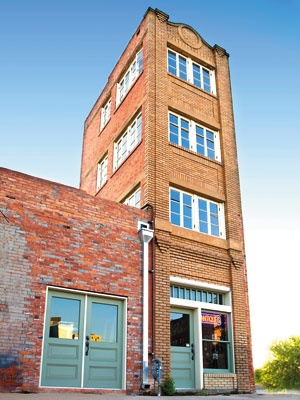 Then, almost as soon as construction started, it was finished.
Then, almost as soon as construction started, it was finished.
McMahon’s “skyscraper” topped out at just four stories. Each floor held only one tiny office. The structure stood 40 feet – about the same size as seven tall men – and had one of the least impressive views from any skyscraper anywhere.
Wichita Falls was now on the map, alright. It was the laughing stock of Texas.
The five investors weren’t laughing. They immediately hauled McMahon into court, where they promptly ran into a legal wall.
When the lawyers took a close look at McMahon’s blueprints, they were stunned by what the saw. The investors, who had practically tripped over themselves rushing to get in on the deal, hadn’t read the fine print. The plans were drawn to a scale that was in inches, not feet! Meaning the building raised 480 inches – not 480 feet as the men who’d put down the money had assumed.
Even worse, no evidence was found proving McMahon ever spoke the words “48 stories,” “48 floors” or anything of the sort. He had relied instead on the conman’s greatest asset, his victims’ greed, and had swindled them with surgical precision. The judge had no choice but to rule in McMahon’s favor; he had legally delivered what he had promised. Case closed.
Although McMahon beat the rap, hanging around Wichita Falls wasn’t a wise idea. Texans carry guns, after all, and they know how to use them. So he slipped out of town PDQ. McMahon seems to have later talked his way into a vice presidency with Rome, New York’s utilities company, then vanished from history.
For the Newby-McMahon Building, as it’s known, it was a hard-luck story. Ripley’s Believe It Or Not poked fun of it in 1920, it sat empty during the Great Depression and fire gutted much of it in 1931.
 World War II gave it a second chance, when every bit of available space was needed for the war effort. The Wichita County Heritage Society later bought it and restored it, then returned it to private hands. With its centennial drawing near, the old building is roaring into the 21st Century in fine form.
World War II gave it a second chance, when every bit of available space was needed for the war effort. The Wichita County Heritage Society later bought it and restored it, then returned it to private hands. With its centennial drawing near, the old building is roaring into the 21st Century in fine form.
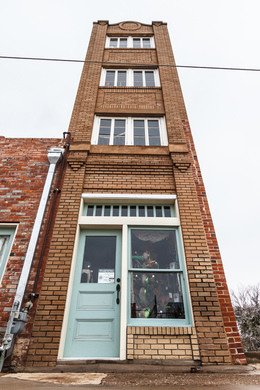 The investors and the people of Wichita Falls were eventually able to grin at their misfortune. In fact, the building is a now a historic landmark and helps draw visitors to the town, a physical reminder that despite the saying, everything isn’t always big in … oh, you know.
The investors and the people of Wichita Falls were eventually able to grin at their misfortune. In fact, the building is a now a historic landmark and helps draw visitors to the town, a physical reminder that despite the saying, everything isn’t always big in … oh, you know.
Did you find this enjoyable? Please continue to join me each week, and I invite you to read Tell it Like Tupper and share your review!
Curious about Tell It Like Tupper? Here’s a chance to see for yourself. Take a sneak peek at a couple chapters in this free downloadable excerpt

